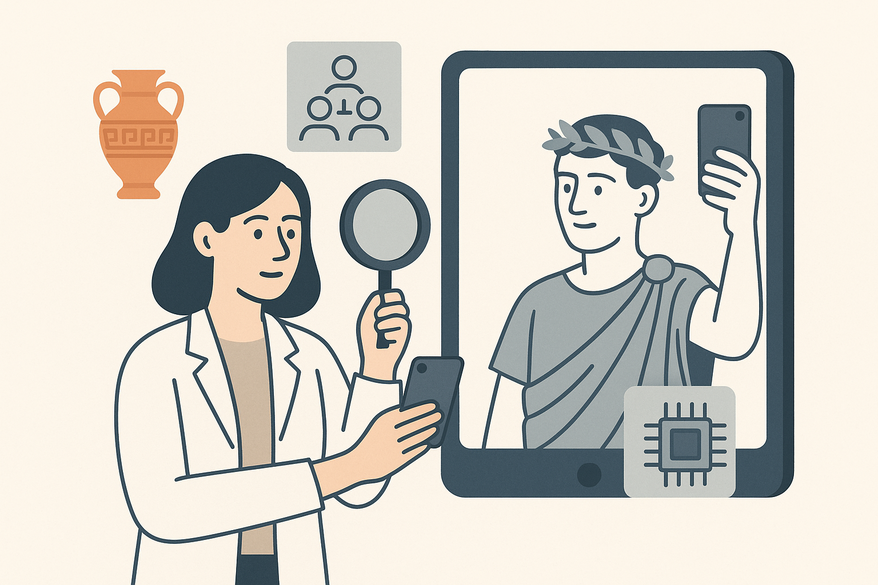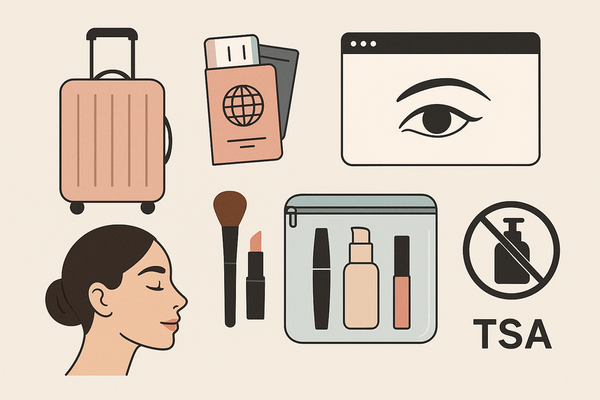Unlocking the Past: Using Historical Selfies for Analysis
Explore how using historical selfies for analysis can uncover insights into past cultures, social hierarchies, and technological evolution.

Estimated reading time: 8 minutes
Key Takeaways
- Definition: Understanding what qualifies as a historical selfie, from Renaissance paintings to early daguerreotypes.
- Evolution: Tracing self-portraiture from analog art to the first photographic images.
- Methodologies: Combining art-historical, digital-archival, and data-science techniques for deep analysis.
- Insights: Discovering social status, hidden symbolism, and technological innovation through self-portraits.
- Future directions: Applying AI, AR, and interdisciplinary research to enrich our understanding of past and present self-representation.
Table of Contents
- Historical Context & Evolution
- Techniques & Methodologies
- Insights Gained Through Analysis
- Challenges & Limitations
- Future Directions and Applications
- Conclusion
- FAQ
Historical Context & Evolution
Self-portraiture has long served as both artistic expression and social statement. From the early brushstrokes of the Renaissance to the chemical processes of daguerreotypes, these analog "selfies" document shifts in identity, technology, and culture.
Origins in the Renaissance
- Artists like Jan Van Eyck and Albrecht Dürer painted themselves to assert status and personality.
- Symbolic elements—tools, backgrounds, attire—conveyed cultural and personal messages.
- These portraits functioned as analog identity cards in courtly and civic settings.
First Photographic Selfie
- In 1839, Robert Cornelius captured what is widely regarded as the first camera-based self-portrait.
- The daguerreotype required removing the lens cap and holding still for several minutes.
- The image reflects both the novelty and technical constraints of early photography.
Popularization of Personal Cameras
- Kodak Brownie box cameras (1900) made self-portraits accessible to amateurs.
- Polaroid SX-70 (1970s) offered instant prints, democratizing personal imaging.
- Families and hobbyists began creating personal snapshots for memory-keeping.
Comparison to Modern Selfies
- Historical images were carefully staged due to long exposures and social decorum.
- Digital selfies are spontaneous, aided by front-facing cameras and filters.
- The transition highlights evolving technology, social norms, and the speed of sharing.
By tracing these stages, we set the foundation for detailed analysis of purpose, context, and technique.
Techniques & Methodologies
Interpreting historical selfies demands a blend of disciplines—art history, digital archiving, and data science—each revealing layers of meaning.
Art-Historical Methods
- Composition Analysis: Examines framing and perspective to reveal intended focus.
- Symbolism Decoding: Identifies props and attire as cultural or personal symbols.
- Contextual Comparison: Situates an image within contemporary artistic trends.
Digital-Archival Techniques
- High-Resolution Scanning: Captures surface textures invisible to the naked eye.
- Digital Restoration: Repairs damage while preserving authenticity.
- Metadata Extraction: Uses date stamps and annotations to confirm provenance.
Data-Science Approaches
- Facial Recognition Algorithms: Confirms identity by matching features across images.
- Pattern Detection: Uses machine learning to spot stylistic motifs (traditional vs AI makeup analysis).
- Database Cross-Referencing: Automates archival searches (how makeup scoring works).
While digital selfies rely on hashtags and geotags, historical analysis depends on letters, diaries, and exhibition catalogs. Technology bridges gaps, but human expertise remains essential.
Insights Gained Through Analysis
Studying these portraits uncovers patterns in technology adoption, social hierarchy, and hidden messages within compositions.
Technological Evolution
- Daguerreotypes offered greater detail than paintings.
- Early prototypes of "selfie sticks" demonstrate inventive framing long before smartphones.
- New camera models continually expanded access to self-portraiture.
Social Status and Identity
- Commissioned portraits were luxuries of the wealthy elite.
- Attire and settings signaled rank and access to emerging technologies.
- Brownie snapshots reflect the democratization of personal imaging.
Case Study: Grand Duchess Anastasia’s 1914 Mirror Selfie
- Used a handheld mirror to frame her image, blending novelty with intimacy.
- Pose, attire, and backdrop reveal royal self-presentation on the eve of World War I.
- Analysis highlights emotional and political subtext in the composition.
Hidden Messages in Composition
- Props—books or flowers—indicate intellectual or romantic interests.
- Gestures—direct gaze or hand placement—encode defiance or conformity.
- Background details link subjects to cultural or political movements.
These findings demonstrate how historical selfies illuminate both personal narratives and collective trends.
Challenges & Limitations
Although rich in detail, historical selfie analysis faces hurdles that demand careful methodology.
Image Quality Issues
- Deterioration: Fading and tarnish obscure details.
- Low Resolution: Lacks the fine grain of modern sensors.
- Incomplete Prints: Cropping or damage removes context.
Source Scarcity & Authenticity
- Limited Archives: Many images remain in private or lost collections.
- Forged Images: Misleading vintage-style photos can distort history.
- Verification Hurdles: Sparse documentation complicates dating and attribution.
Contextual Gaps
- Missing Writings: Lack of diaries or letters makes interpretation speculative.
- Cultural Shifts: Symbols may evolve, risking anachronistic readings.
Technological Mitigation
- Spectral Imaging: Reveals underdrawings or erased details.
- Forensic Analysis: Dates and authenticates via chemical composition.
- Reversible Restoration: Corrects digitally without altering originals.
Ethical Considerations
- Privacy: Respecting the dignity of historical subjects.
- Over-Restoration: Avoiding misleading enhancements.
- Bias: Declaring assumptions to prevent projecting modern values.
A transparent and ethical approach ensures academic rigor and respect for the past.
Future Directions and Applications
Emerging tools and collaborations promise to expand the study of historical self-portraits.
Artificial Intelligence & Deep Learning
- Automated Object Recognition: Tags period furniture and attire.
- Facial Attribute Analysis: Detects expression and estimates age.
- Pattern Mining: Maps motifs across large collections.
Augmented Reality Reconstructions
- Interactive exhibits overlay historical studio settings in museums.
- Virtual time-travel apps place users in 19th-century workshops.
- Educational tools let students annotate and engage with self-portraits.
Interdisciplinary Research
- Historians and computer scientists refining art-aware algorithms.
- Ethicists and conservators ensuring responsible innovation.
- Cultural scholars linking past self-representation to modern identity politics.
Impact on Contemporary Studies
- Tracing the roots of today’s social media behaviors.
- Informing best practices in self-branding and digital heritage.
- Guiding the archiving of modern selfies through lessons learned.
Tools like Makeup Check AI demonstrate how AI-driven analysis can adapt from beauty-tech to art-historical insights.
Conclusion
Using historical selfies for analysis opens a unique window into past cultures, technologies, and personal narratives. We have:
- Traced origins from Renaissance portraits to early photography.
- Explored art-historical, digital-archival, and data-science methods.
- Uncovered insights on social status, symbolism, and innovation.
- Addressed challenges, ethical considerations, and documentation gaps.
- Highlighted future possibilities with AI, AR, and interdisciplinary research.
We encourage scholars, archivists, and enthusiasts to continue developing open-source tools and sharing findings to enrich our collective story of self-representation.
FAQ
- What is a historical selfie? A self-portrait created before digital cameras—ranging from painted portraits to daguerreotypes.
- How do researchers analyze these images? By using art-historical context, high-resolution scanning, and machine-learning tools to interpret composition and provenance.
- What are the main challenges? Image deterioration, limited archives, and cultural misinterpretation require careful, ethical methodologies.
- How might AI enhance future studies? AI can automate object recognition, analyze facial attributes, and detect patterns across large datasets for richer insights.
- Where can I learn more? Explore resources from Makeup Check AI and articles on historical photography for deeper dives.




